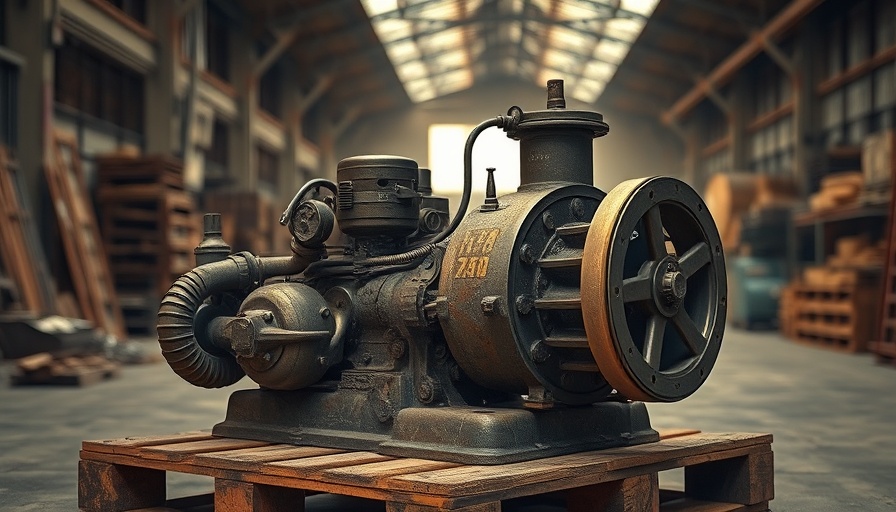
Uncovering the Charm of Hit-and-Miss Engines
Antique hit-and-miss engines are more than just nostalgic relics from a bygone era; they represent an intriguing chapter in the evolution of agricultural technology. As demonstrated at the Ederville tractor show in Carthage, North Carolina, these mechanical marvels are not just functional machines but also unique pieces of art that evoke curiosity and admiration.
The Unique Mechanics Behind the Quirkiness
Hit-and-miss engines are designed for efficiency and reliability, featuring a fascinating mechanism that allows them to maintain a constant speed. The process involves a weight that adjusts its position based on the engine's centrifugal force, creating a delightful “putt” sound as the engine operates. This distinctive feature helped farmers power various equipment from ice cream makers to saws, marking a significant advancement over earlier methods that relied on water wheels, steam engines, or manual labor.
Celebrating a Collectible Passion
At Ederville, the collection of hit-and-miss engines is a testament to the passion of the late Ken Eder, who meticulously gathered these engines during his travels across the country. With over 60 engines on display, each has its own character and charm, offering a glimpse into the ingenuity of past generations. As Kyle Walker from Mideast Railroad Service notes, the collection is still expanding, with many more engines awaiting their turn to be displayed.
How Hit-and-Miss Engines Shaped Farm Life
Before electricity became ubiquitous, these engines provided farms with a much-needed alternative power source. Their arrival revolutionized not just agricultural practices but also everyday life on farms. By enabling farmers to use simple belts to run various machinery, hit-and-miss engines transformed tasks that once required significant human power or animal labor into more manageable efforts.
Future of Antique Collecting and Preservation
As interest in vintage technology grows, the preservation of such remarkable machines becomes paramount. Understanding their significance ensures that future generations can appreciate the innovations that paved the way for modern machinery. Antique shows and exhibitions like the 100-Plus Years of Progress event are critical in fostering appreciation for this segment of mechanical history and in educating the public.
Connecting Generations Through Mechanical Heritage
These engines do more than just run; they weave stories that connect generations of individuals who once toiled in the fields. Today's enthusiasts not only restore these engines but also share the knowledge and history with younger audiences. This connection can inspire a new generation to appreciate the roots of modern technology and to understand the balance between innovation and tradition.
Actionable Insights for Collectors and Enthusiasts
If you find yourself fascinated by hit-and-miss engines and considering starting your own collection, prioritize learning about these machines’ historical contexts and operational mechanics. Join local clubs or participate in antique engine shows to engage with like-minded enthusiasts. Online resources and forums allow broader access to information, tips on maintenance, and restoration practices—all valuable to new collectors.
Emotional Connection and Human Interest
The admiration for hit-and-miss engines is profoundly emotional for many collectors. It’s about preserving pieces of history, maintaining familial connections, or simply a love for engineering. For many, these engines invoke memories of simpler times, bathed in the sounds of hard work and innovation. They symbolize not only the spirit of innovation but also a kind of timeless craftsmanship.
As we celebrate these quirky machines, we invite you to engage with the community of collectors, enthusiasts, and history buffs. Each engine has a story to tell, and in sharing them, we keep the tradition alive.
 Add Row
Add Row  Add
Add 




Write A Comment